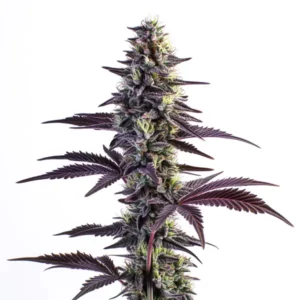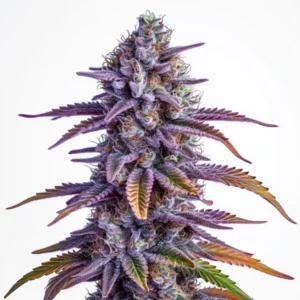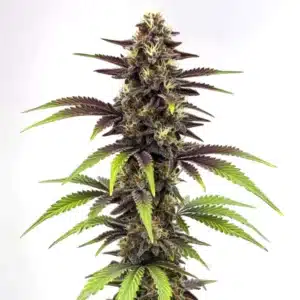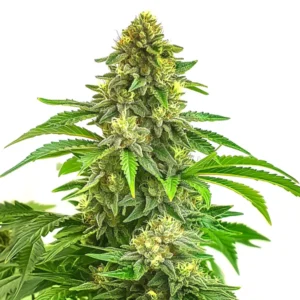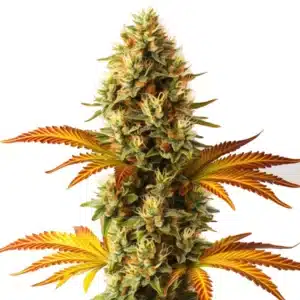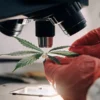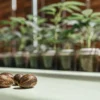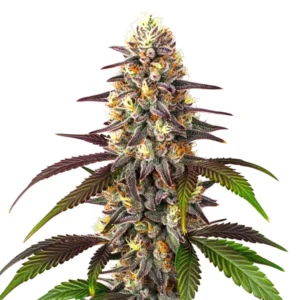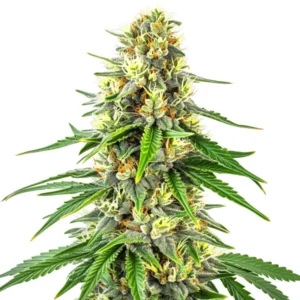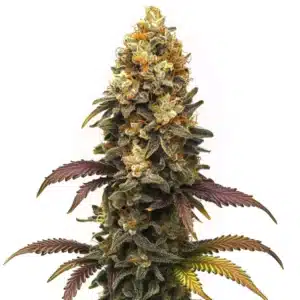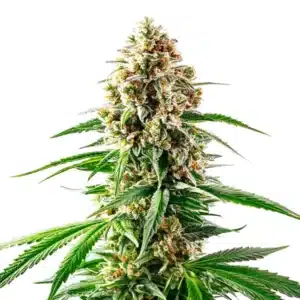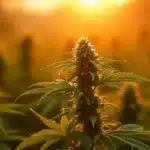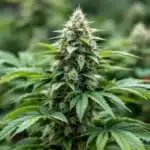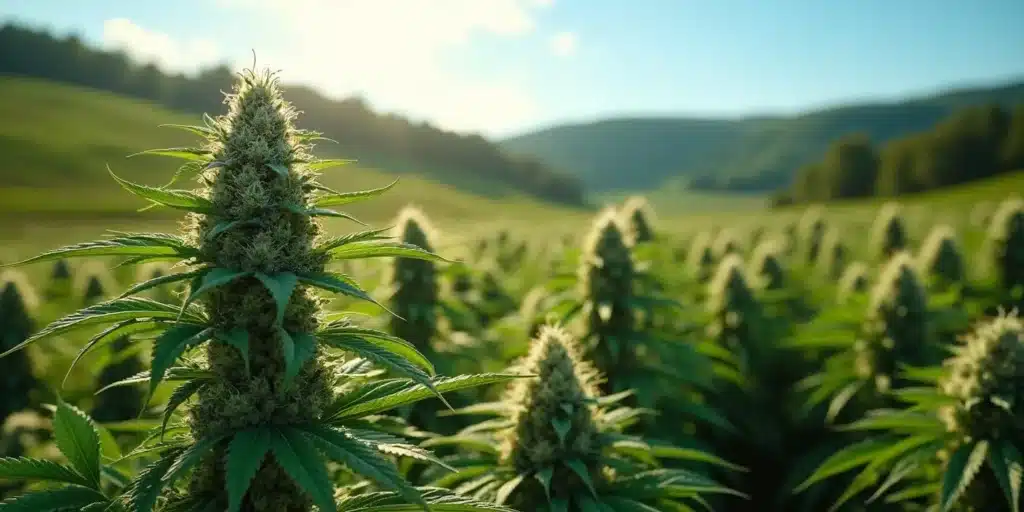
When Does Flowering Start Outdoor in Virginia
Growing cannabis outdoors in Virginia can be a rewarding experience, especially for those who appreciate the beauty of plants in their natural environment. For both new and seasoned growers, knowing when flowering begins is key to a successful harvest. This article breaks down the flowering timeline, environmental factors, and offers some useful tips for outdoor cannabis cultivation in Virginia.
The Flowering Cycle
The flowering cycle of cannabis is essential for planning your growing season. Flowering typically begins when the plants receive less light, which occurs as summer transitions to fall.
Recommended Strains
Blue Grape Fuel
|
|
THC | 24% - 26% (High) |
|
|
Type | Feminized |
|
|
Yield | High |
|
|
Phenotype | 50% Indica / 50% Sativa |
Bruce Banner x Grape
|
|
THC | 15% - 20% (Medium) |
|
|
Type | Feminized |
|
|
Yield | High |
|
|
Phenotype | 45% Indica / 55% Sativa |
In Virginia, flowering usually starts around mid-August to early September. During this period, daylight hours decrease, sending a clear signal to the plants that it’s time for them to begin their reproductive phase and develop those desirable buds.
Recognizing this cycle can greatly enhance your gardening strategy. If you prepare accordingly, you can maximize both the quality and quantity of your yield. As seasons shift, your plants will respond not just to light but also to other changes in their environment.
This critical phase emphasizes the relationship between mindful cultivation and environmental cues. Don’t overlook how local weather patterns can tweak your timeline. It’s a dance between nature and nurture, and you’re the choreographer!
Signs of Flowering
As flowering approaches, growers can look out for specific signs that indicate their plants are ready to bloom. These signs include the development of pre-flowers, which are small clusters appearing near the nodes of the plant. Male plants will produce small pollen sacs, while females will develop beautiful white pistils.
Recognizing these initial signs is important as it allows you to separate male plants from female ones, as only females will produce the buds that we harvest and enjoy. This stage guarantees that your efforts won’t go to waste, an essential concern for any diligent grower.
Consider keeping a journal to track the changes in your plants. This will not only provide a record for your current grow but also serve as a useful reference for future seasons. It can be quite satisfying to document visual growth and development.
So, tune in closely to your garden. Each sign of flowering is a step closer to enjoying the fruits of your labor. Celebrate the small victories along the way, and remember that patience and observation are part of the game!
Promos & Deals
Climate Considerations
The climate in Virginia plays a significant role in determining flowering times. Generally, Virginia experiences a humid subtropical climate, which can influence plant growth and flowering patterns. As summer fades and temperatures start to drop, the transition into the flowering stage becomes more pronounced.
As a grower, it’s crucial to monitor weather fluctuations because unexpected changes can impact your timeline. For instance, if there’s an unusually warm period in early September, plants might continue to vegetate a bit longer before initiating flowering, throwing your schedule off balance.
Consider investing in a weather station or a basic thermometer and hygrometer to track local conditions. By being proactive about monitoring changes, you can make timely adjustments in your cultivation practices, whether that’s altering watering routines or adding nutrients.
Learning to read your local climate can provide you with the knowledge you need to thrive. It reinforces the notion that a successful garden depends not just on the plants but also on your understanding of the environment surrounding them.
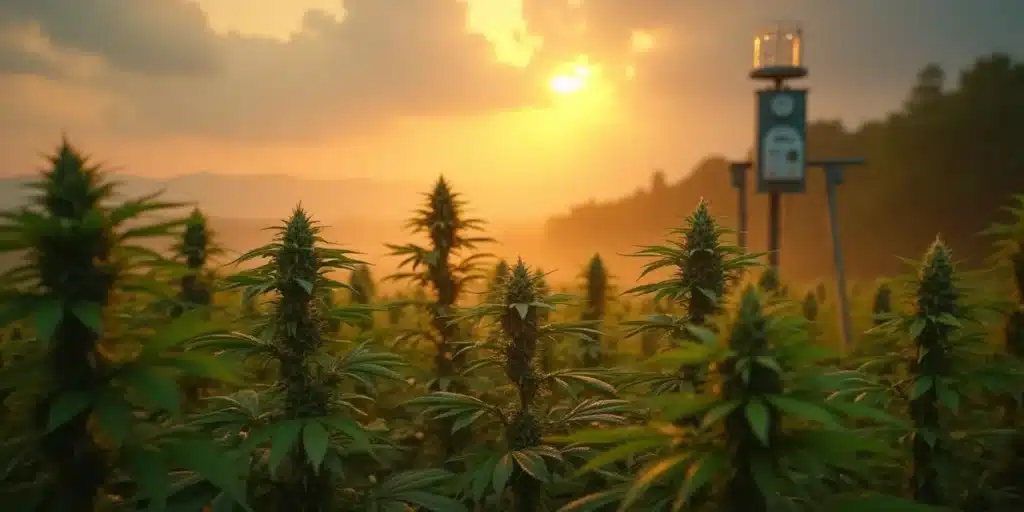
Tips for Preparing for Flowering
To ensure a successful flowering phase, prepare your plants in advance. Here are some friendly suggestions:
- Choose the Right Strains: Certain strains are more suited to Virginia’s climate. Consider varieties like Blueberry, Green Crack, and Girl Scout Cookies, all of which thrive in moderate climates where humidity can be a factor.
- Provide Adequate Nutrients: When transitioning into the flowering phase, a shift in nutrient delivery can be beneficial. Gradually adjust your feeding schedule to support flower production, using fertilizers rich in phosphorus and potassium.
- Manage Watering: Consistent watering practices are crucial. As plants enter flowering, they usually require less water than during their vegetative stage, so monitor soil moisture carefully.
Implementing these strategies establishes a strong foundation for an abundant harvest and helps minimize potential concerns during the flowering phase. Each flower produced has the potential to delight, so set your goals and work to achieve them!
Also, don’t hesitate to connect with local grower communities or forums. You might find invaluable insights from others who have navigated similar challenges, and sharing your own experiences can foster wonderful connections in the growing community!
Outdoor Challenges
Growing cannabis outdoors comes with its unique set of challenges. From fluctuating temperatures to the threat of pests, being aware of potential issues can keep your plants healthy and thriving. Each challenge is an opportunity for learning and growth, as a gardener and as an individual.
Pests can be particularly troublesome during the flowering stage, as they may damage the beautiful buds you’ve worked hard to cultivate. Regularly inspect your plants for signs of pests like spider mites or aphids, and take action swiftly to prevent infestations before they escalate.
To further enhance your defenses, consider organic pest control methods. Natural solutions like neem oil or insecticidal soap can be effective while being gentle on the environment, allowing you to cultivate with both care and responsibility.
Staying vigilant and proactive about pest control is crucial. Think ahead about potential complications, and keep your tools ready. This kind of preparedness will serve you well throughout your gardening journey.
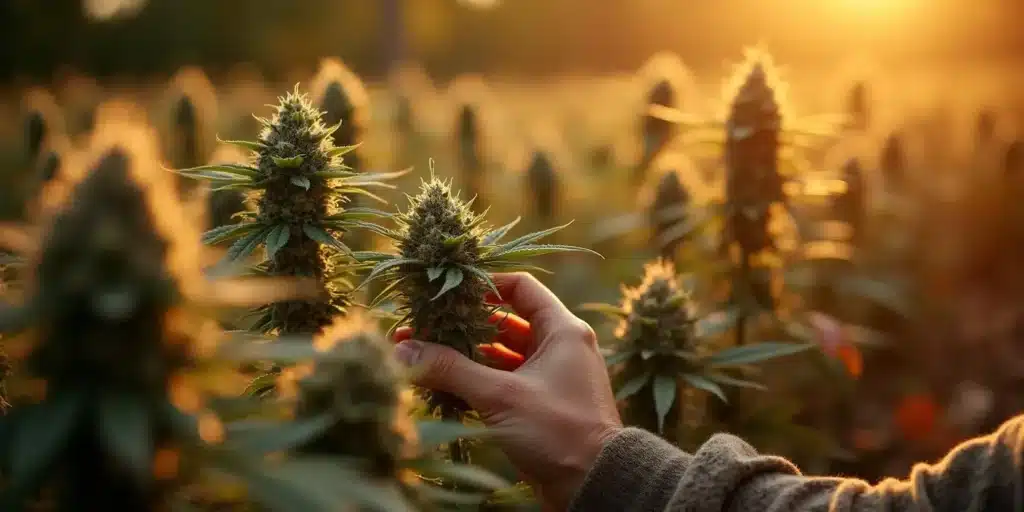
Addressing Environmental Stressors
Environmental stressors can also hinder the flowering process. High humidity may lead to mold or bud rot, while excessive heat can stress your plants significantly. It’s essential to understand how these conditions impact your crops:
- Humidity Control: If the humidity rises, consider using a dehumidifier or fans to improve airflow around your plants. Maintaining optimal conditions can prevent mold.
- Temperature Management: On particularly hot days, providing shade during peak sunlight hours can protect your plants from heat stress. Think about setting up shade cloth or placing your plants strategically.
Mitigating these environmental challenges will set your plants up for success as they enter the flowering phase. Ultimately, this effort enhances both yield and quality, allowing you to enjoy the fruits of your labor at their best!
Keep a close eye on weather variations and adjust your care accordingly, because the more you understand about how weather impacts your plants, the better equipped you will be to nurture them through every season.
Harvest Timing
Knowing when to harvest is just as crucial as understanding when flowering begins. Generally, cannabis plants are ready to harvest about 8 to 10 weeks after flowering starts. In Virginia, this means that harvesting may occur from late October to early November.
Indications that your plants are ready for harvest include changes in the color of the trichomes. Clear trichomes suggest it is too early, while amber trichomes indicate peak potency. Many enthusiasts prefer cloudy white trichomes, which signal a desirable balance of effects.
Your harvesting time can also affect the flavor and aroma of your end product, so consider your preferences when you examine your plants. Harvesting at different times can allow you to experiment and uncover the flavors that you enjoy most.
Don’t overlook the significance of a well-timed harvest. It’s your opportunity to capture the essence of your hard work, and with the right attention, you can prevent losses that may occur from pests or weather changes.
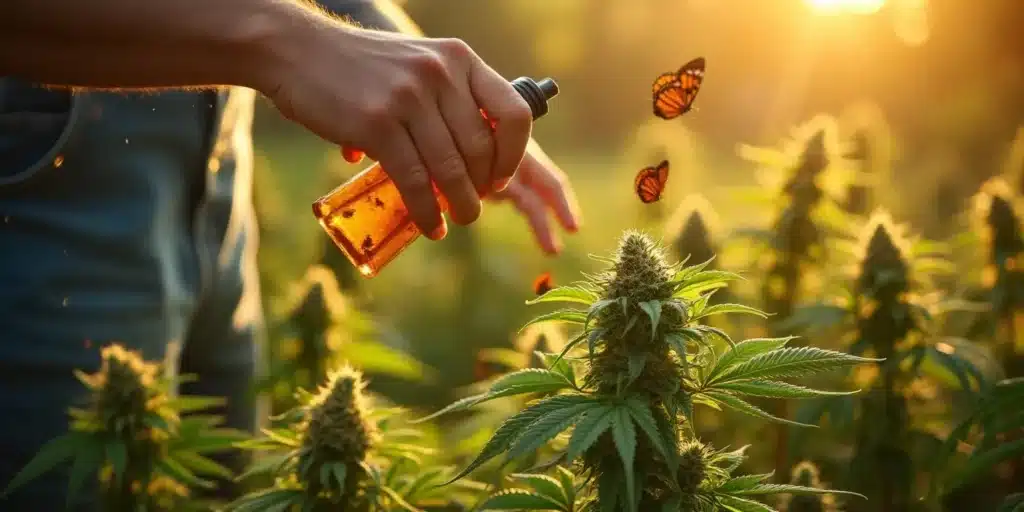
Final Preparations for Harvest
As the harvest period approaches, several final preparations can enhance the quality of your yield:
- Flush Your Plants: Stopping nutrient feed for the final week or two can help improve flavor by clearing out chemical residues that affect taste. A natural finish makes a world of difference.
- Check Weather Conditions: Late-season rain or frost can pose a danger to your buds, so it’s essential to keep an eye on the forecast as harvest time nears.
By taking these steps, you can ensure that your cannabis is both flavorful and potent when it’s finally time to enjoy the fruits of your labor. Your patience and planning will pay off as you savor your harvest!
Engaging with the harvesting process truly brings together the culmination of all your efforts. Whether you share your yield with friends or savor it during quiet moments, celebrate this season’s success as a highlight of your gardening journey.
Choosing the Right Cannabis Strains
Selecting appropriate cannabis strains is vital for outdoor growth in Virginia. The local climate and conditions can better suit specific varieties, enhancing your gardening experience. Here are a few strains to consider:
- Blueberry: Known for its sweet flavor and relaxing effects, this strain performs exceptionally well in humid environments. It’s tasting notes and balanced effects are often favorites among growers.
- Green Crack: This energetic strain thrives in warm, sunny weather, offering a vibrant harvest. Ideal for those needing a boost of focus and creativity.
- Girl Scout Cookies: A hybrid that adapts well to outdoor conditions, producing dense buds with a delightful aroma. Its combination of relaxing and uplifting qualities makes it quite popular.
By choosing suitable strains, growers can better align their efforts with environmental conditions. This consideration is critical for maximizing both yield and quality, ensuring a successful gardening experience.
And remember, every grower’s journey is unique. Sharing your experiences and outcomes with various strains can help cultivate a richer community knowledge and assist others in making informed choices.
FAQs
When should I start my cannabis seeds outdoors in Virginia?
The best time to start cannabis seeds outdoors in Virginia is usually after the last frost, typically around mid-April to late April. This timing gives plants the longest growing season before they begin to flower, allowing optimal growth opportunities.
How can I tell my cannabis plants are flowering?
You can tell your cannabis plants are flowering when you see small clusters of white hairs (pistils) forming at the nodes. If you have a male plant, you’ll notice small pollen sacs instead. The appearance of these signs marks the beginning of the flowering phase.
What is the best way to protect my outdoor cannabis plants from pests?
Regular inspection of the plants is crucial for defending against pests. Consider using organic pest control solutions, like neem oil or insecticidal soap, and introduce beneficial insects like ladybugs to your garden. Maintaining a clean growing area can also help dissuade pests from taking hold.
How much sunlight do cannabis plants need during flowering?
Cannabis plants typically require at least 6 to 8 hours of direct sunlight each day during the flowering phase. Placing them in a location that receives ample sunlight is essential for robust growth and development, and can lead to a bountiful harvest.


